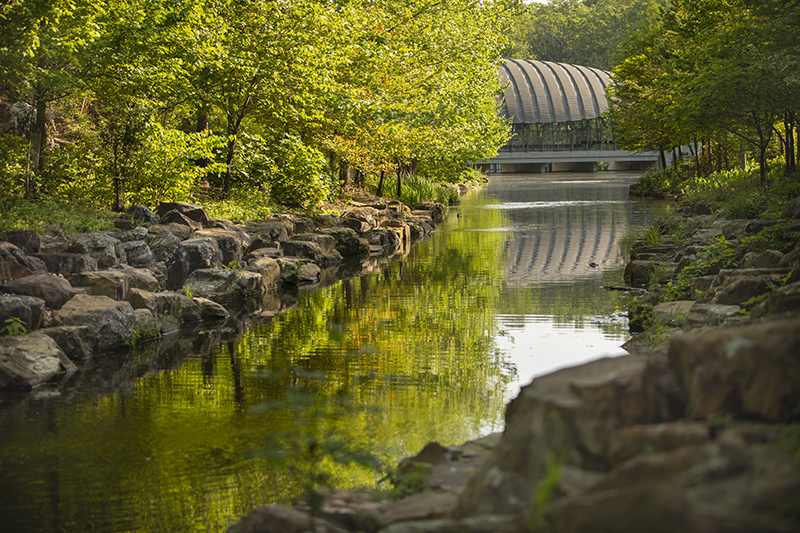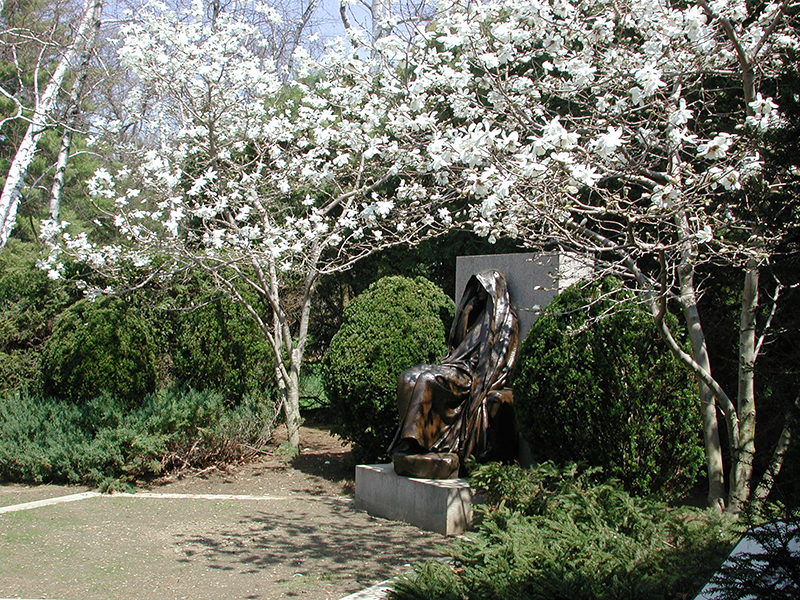While many American cultural institutions are attempting limited re-openings with fingers crossed and bated breath, for the utltracautious aesthete, museum gardens and sculpture parks offer and alternative way to enjoy art, beauty, and a little serenity. Some suggestions:

Huntington Library, Art Museum, and Botanical Gardens, San Marino, CA
The sixteen gardens that surround Henry E. and Arabella Huntington’s former home cover some 130 acres— plenty of room for visitors to enjoy nature while keeping a safe distance from fellow plant lovers! Not to be missed is the Desert Garden, one of the largest outdoor collections of mature cacti and succulents in the world. The Rose Garden includes the “Huntington’s Hundredth” rose, a pastel yellow and orchid pink blend engineered to celebrate the Huntington’s centennial. Southern California’s mild weather guarantees that the flower’s vibrant colors will be on full display well into November. But don’t delay visiting on the Huntington’s Hundredth’s account—not all blooms last so long. huntington.org
Crystal Bridges Museum of American Art, Bentonville, AR
With more than four miles of trails winding through the museum’s 120-acre campus, Crystal Bridges is a feast of Ozark vistas. For a relaxed visit, walk the Art Trail and enjoy the combination of sculptures, native plants, and waterways from the safety of a paved path, then circle back to the museum and take the North Lawn Trail for a close look at Mark di Suvero’s monumental sculpture Lowell’s Ocean and Buckminster Fuller’s Fly’s Eye Dome. If you have a bit more time and want to see additional sculptures, add the 1.5-mile North Forest Trail. Those looking for a hike can enjoy the Tulip Tree and Crystal Spring Trails. Crystal Bridges owes its name to the Crystal Spring that bubbles up from the Ozark limestone on the latter trail, and Tulip Tree features some of the largest trees on the property. It’s a little less than a mile of total serenity. crystalbridges.org
Boscobel House and Gardens, Garrison, NY
For those on the East Coast, Boscobel’s sixty-eight acres, with views across the Hudson River to the highlands, make the historic Federal-style house well worth a visit. But panoramic views are only the beginning. The Frances Stevens Reese Woodland Trail of Discovery makes for a scenic and relaxing mile-long walk through the forest, winding across twenty-nine acres and including views of a waterfall. For a less rustic experience, a stroll through the Formal Garden, laid out in the English wheel pattern and bordered by yew hedges, is a must. Healthcare workers get in for free, and can secure their reservations by contacting Director of Visitor Engagement Ed Glisson at eglisson@boscobel.org. All other visitors can reserve tickets online. boscobel.org

Saint-Gaudens National Historic Park, Cornish, NH
From 1885, American sculptor Augustus Saint-Gaudens lived in the house that’s now part of his namesake park, accepting commissions from the likes of Stanford White and Teddy Roosevelt. Today the grounds are home to some of the site’s more than one hundred sculptures, and are crisscrossed by trails that loop through the surrounding woods. The Shaw Memorial shouldn’t be missed. A monument to Colonel Robert Gould Shaw and the all-Black Union regiment he commanded during the Civil War, it is one of Saint-Gaudens’s most famous works. Perhaps the most moving of the sculptures on display is the Adams Memorial, a bronze commissioned by historian Henry Adams to honor his wife after her death. nps.gov/saga
Morven Museum and Gardens, Princeton, NJ
A walk through the Morven’s gardens is like a walk through history. Thirteen catalpa trees in front of the historic house were planted by Richard “The Signer” Stockton in the mid-1700s to represent each of the thirteen original colonies. Several socially-distanced events throughout the garden are being coordinated by the museum, including forty-five-minute docent tours. Self-guided tours are available, too, allowing visitors to take in the new interpretive signage installed on the grounds. Make a reservation on the Morven’s website or email info@morven.org. morven.org

Winterthur Museum, Garden, and Library, Winterthur, DE
The environs of Winterthur include rolling hills, streams, meadows, and forests, along with carefully coordinated blooms of flowers and shrubs in the institution’s formal gardens. September and October offer the spectacle of blossoming white hydrangeas, crepe myrtle, pink abelias, and begonias near the Reflecting Pool, as well as asters, hostas, and coral bells in the Quarry Garden. Oak Hill in October is particularly striking. A combination of golden hardy orange and orange-red tea viburnums, with a smattering of violet beautyberries popping out of that citrus-colored background, this late-life creation of H. F. du Pont is the finest Winterthur has to offer when it comes to fall colors. Reservations are required; they can be made online or by phone. winterthur.org
Dixon Gallery and Gardens, Memphis, TN
In an homage to Hugo Dixon’s European heritage, the bulk of the Dixon’s acreage was laid out in the manner of an English park, with some French- and Italian-style gardens mixed in for variety. The design strategy takes advantage of the ground’s many impressive trees and helps preserve the integrity of the woodlands more generally. The oaks, hickories, and dogwoods of the Woodland Garden share two acres with ferns, wildflowers, and other plants native to the mid-South, and are flanked on the north side by a beautiful water feature. The shady trees offer welcome respite from the summer sun in September. The formal gardens are a more traditional, but no less appealing, arrangement of seasonal plantings, shrubs, and other eye-catchers, surrounded by four types of boxwoods. dixon.org
Philbrook Museum of Art, Tulsa, OK
A combination of formal and vegetable gardens—many of which include native Oklahoma plant life—the Philbrook’s twenty-five acres unfurl in a most pleasant manner. On the Westby Sculpture Walk, sculptures by artists from nine different countries appear. It’s a rotating display of works on loan. Each stroll through the gardens promises something different, both in sculpture and flora, so be sure to visit more than once! While keeping your distance from fellow visitors, don’t forget to give space to the garden cats as well. Perilla and Cleome are friendly, pestcontrolling felines that roam the garden and grounds. They’re not terribly skittish (and love to be featured in photos) but social distance applies to everyone, including our four-pawed friends. The Philbrook Gardens are open with timed-entry reservations. philbrook.org
